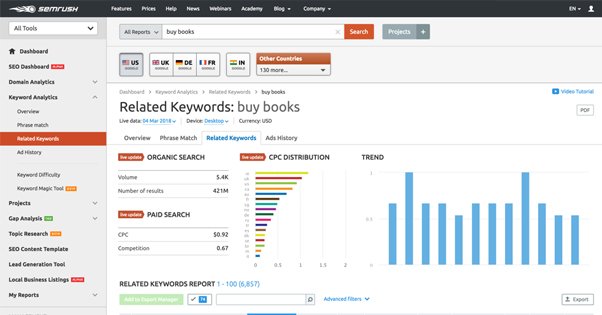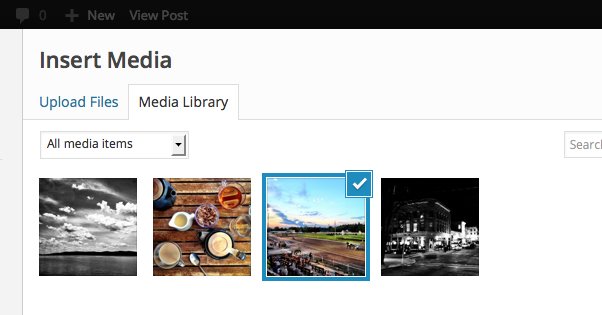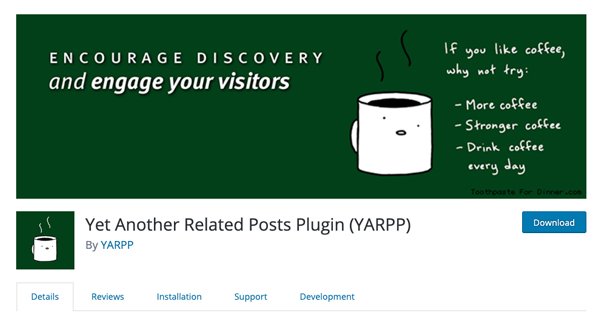15 Tricks to Improve the Rankings of Your Blog Posts
Published by Drew Hendricks • Content Marketing • Posted January 3, 2022 ContentPowered.com
ContentPowered.com
The entire point of marketing is to get more eyes on your product and more money in the bank, and one of the best ways to do that is with organic search engine marketing. Having your website show up on the Google search results – and the other search engines as well – is going to give you a better reputation, a better traffic, and more customers.
So how can you get your blog posts to rank higher in the search engine results pages? Here are fifteen tricks you can use.
1. Write Sufficiently Long Content
Perhaps one of the best tips I can give you is focus on quality over quantity. That is, write a few excellent, lengthy, awesome blog posts, rather than trying to post one unique post every day and letting quality suffer.
One of the best changes I made to my blog was going from daily 1,000-word blog posts to weekly 2,000-word blog posts. This change allowed me to cover individual topics in greater detail, while allowing me to stretch out my topic research further, and also allowed me to spend more time on each individual post. Overall, the quality has gone up dramatically.
Sure, if I could produce this level of content every day, it would probably be even better, but that’s not feasible to maintain. I would need more regular writers and much more topic research, and for now, the effort of producing that much content would outweigh the value.
I consider 1,500 words to be a solid minimum for most blogs these days. Personally, I aim for 2,000. Other bloggers write as much as they need to fully cover a topic, or aim for 5,000 or more. My advice to you is to aim for whatever length you need to cover your chosen topic in the level of detail you want.
2. Follow the Anatomy of a Great Blog Post
Neil Patel is one of the top marketing bloggers out there, and he has refined blog posts into a science. In fact, he even produced this infographic to showcase the anatomy of an ideal blog post:
This is what he has refined his posts into over the last decade, and it works very well.
- Start with a catchy headline that draws people in. Remember, your headline has to draw people in from your search engine results, not just from your website.
- Include a high quality and eye-catching picture. This ends up being your thumbnail for social media shares as well as a banner for your post.
- Write a brief introduction. This hooks your reader and informs them why they should be reading your post. A few sentences is generally fine.
- Include a lead into your main points. This is an overview so your readers know what you’re going to cover.
- Write the main body of your article, covering all of your main points in detail. Include images and links as necessary to reinforce your points.
- Wrap up everything with a short conclusion. You don’t need to go all academic and restate your points, but you should close out your post.
- Invite readers to leave their own feedback, experiences, or comments.
Neil’s infographic also includes the comments and related posts sections as part of your blog posts, though I tend to think of that more as site anatomy. You don’t have to remember to include a comments section in your posts, after all.
3. Research Keywords and Topics
Modern blogs are driven by keyword research, but I feel like the world has moved beyond caring specifically about keywords. Neil may research keywords, but what makes his posts truly stand out is the fact that all of them address a specific question or problem that his readers face. Every post he writes is aimed at solving a problem, teaching readers, or answering specific questions they have.
Thus, the first thing you need to do before any piece of content starts production is determine what question you’re answering for your audience. What concern do they have and how can you address it? Do you have anything unique, like a unique perspective, insider information, or a case study that you can bring to the table? How can you approach this content in a unique way?
Part of your research here should be identifying how to phrase your topic in a way that attracts attention. Look for competition for your topic; what other sites are writing about it, how are they approaching it, and how can you squeeze in? For many topics, it will be a depressing state of affairs, as all the big name sites are covering all the easy topics. Don’t let that stop you from producing content, but recognize that your content needs to be at least on par with theirs if you want to succeed.
4. Don’t Neglect On-Page SEO
Your on-page SEO is an important part of search engine visibility for sure. It’s not my number one tip, nor am I going to go into deep detail with it, however. Why not? Well, it’s the most basic tip anyone can give you. Therefore, I expect you probably already know the basics. It’s worth reading up on modern trends and what’s important, and you should always review to make sure you’re covering all the bases, but otherwise it’s a fairly done-to-death topic so I’ll speak no more on it.
5. Include Plenty of Images and Media
We live in an age of multimedia, and there’s a lot you can do with even simple blog posts. Screenshots, illustrative images, even characters that help guide the flow of a piece are all very nice additions.
Don’t forget that you can also include content from other sites. I’ve found that one useful technique is taking user questions or comments from social media and using that to start up your piece, and embedding them directly. Of course, you always want to keep a screenshot as backup in case the post is deleted.
6. Find Competitors and Outdo Them
I mentioned already that existing competition for a given topic is pretty much always going to exist, and that it shouldn’t dissuade you from writing about the topic. Here’s why: you can do better.
One good strategy for creating content is using your competitor’s content as a baseline. You can see what they’ve done; now do that, but do it better. You can dig deeper into the topic, you can cover other sources, you can refute their points; in general, you can build upon what they did and make an even better resource.
7. Make Sure You’re Mobile Compatible
Early last year, Google started rolling out something called mobile-first indexing. Their index has started to give some preferential treatment to sites that are mobile compatible in a native way – that is, with responsive design – and it’s starting to greatly affect the way the web works.
If you don’t have a mobile site in 2019, you’re way behind the curve. If your mobile site is poor quality or relies on an m.domain or fixed viewport sizes, you’re falling behind. This is going to be one of the biggest search factors moving forward, and you want to be ahead of the curve as much as possible.
8. Optimize Site Speed and Layout
Along with mobile compatibility, site speed and construction are also top-level elements of technical SEO that you can no longer afford to ignore. Site speed alone can bring a site up multiple places in the SERPS, and making sure your structure is easily navigable is always a good idea.
I highly recommend taking the time to check what your current site speed ratings are, and looking into different ways you can speed it up. Optimize your scripts, minimize scripts you don’t need, run a CDN for your media, and generally improve the whole thing for a good boost in rankings.
9. Crosslink and Reference Liberally
I always try to have links within my posts to other posts on my site, and that’s something everyone should do. Don’t rely on related post plugins to do all of your cross-linking; because they’re dynamic, they won’t be indexed as permanent links. Because there are native ads that mimic related posts, many people have a form of banner blindness towards them. In-text links are the only links that people can’t really ignore entirely.
Cross-linking within your own posts does two things for you. First, it allows people to stay on your site longer as they find more and more to read. Second, it allows Google to find your own content more easily, particularly for new content as you publish it. Speaking of, that’s one of many steps to help improve indexation that I recommend you implement.
10. Build Links to Content with Guest Posts and Outreach
A huge portion of your search engine ranking comes from the links pointing back at your content, both in terms of the content itself and in terms of the domain as a whole. You want to build up as many high quality links as possible.
My go-to strategy is to build one centralized top-tier post, a skyscraper post with a ton of value in it. I then pitch out guest posts on other sites in related topics, that can point back to the skyscraper post with relevant, in-text links. Sure, a lot of guest posts aren’t followed, but Google likes both a broader presence for your audience profile and more implied mentions of your brand, so it’s valuable regardless.
11. Keep Older Content Alive with Updates
The timeliness of content is a determining factor in search engine relevance, even though you often find content years old in the top ten. How do these sites do it? In part, because they’re simply providing the best resources on the topics they can.
In part, though, it’s because they keep their content up to date. Google can detect when your content is updated by comparing what they see with what’s in their index, and they can adjust their ranking accordingly. When you keep your content up to date, Google knows it’s still maintained and still high quality, and will give you a better ranking because of it.
12. Repurpose Older Content for Extra Longevity
Older content should not be neglected; it’s a resource as much as it is anything.
Older content, if you don’t want to update it, can be given new life in other ways. For example, you can pare down a blog post into a punchy script and record it in audio as a podcast or in video for YouTube or Vimeo. You can break it down even further into a slide deck. You can add illustrations to it and make it an infographic. One piece of content, thus, can spiral out into half a dozen, all of which can bring in more traffic.
Social media is a core part of content marketing and I will always recommend that you maintain profiles on Facebook and Twitter, as well as your choice of Instagram, Pinterest, or LinkedIn, depending on your business focus. Share your content on those platforms when you post it, and again a week or so later.
14. Consider Paid Advertising for Top Tier Content
Paid advertising isn’t necessarily going to do anything for your search ranking on its own, but it can have a secondary effect. When you pay for advertising, particularly on Facebook and/or Twitter, you get more exposure to your content, which can lead to more shares and more traffic. This can spiral into even more organic traffic, which can lead to links and citations, which can increase your search ranking. It’s difficult to track, but it’s worth doing if you have the budget to handle it.
15. Give Your Growth Efforts Plenty of Time
I know you’ve probably heard this one a thousand times, but at the end of the day, you simply have to keep going. White hat, organic SEO and marketing take time. You won’t be able to publish your first blog post and hit the big time. Think of it like a snowball on top of a mountain. Toss a snowball down the slope and it might not do much, but keep tossing them and you can eventually start an avalanche.
That’s the power of content. Each piece of content can rank on its own, but the more you have, the more powerful all of your content becomes. Once you start hitting the big time, all of your content can start ranking in the top 10, and suddenly you’re there. It’s a slow, gradual process, but when it works, it’s hard to stop.












